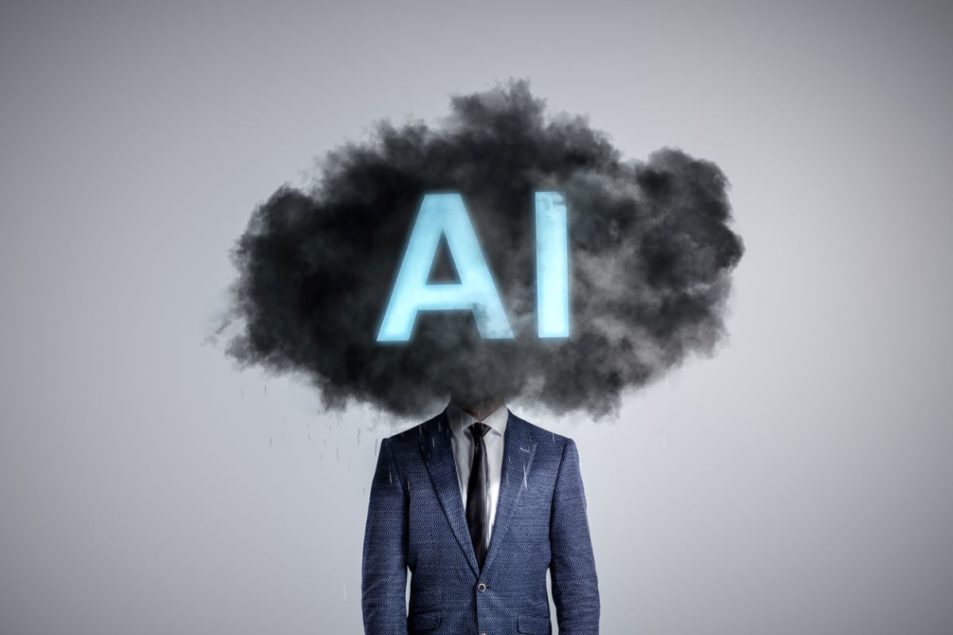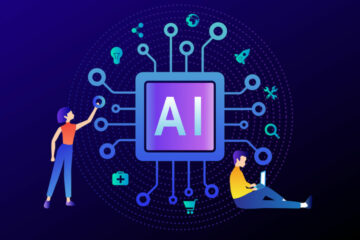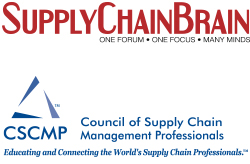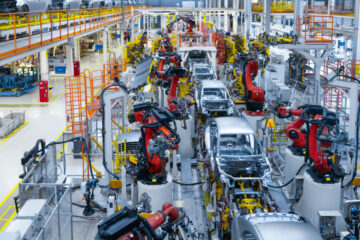
Gartner predicts that through 2024, half of surveyed supply chain organizations will invest in applications that support artificial intelligence and advanced analytics. As it was with blockchain a few years ago, AI is the latest trendy thing to gain momentum even in the most traditional industries. It’s among the top three supply chain trends in 2024, according to the Association for Supply Chain Management.
Two thousand twenty-four is going to be a pragmatic year for business, and AI will play a big part in it. Does this mean, however, that everyone must rush to purchase an AI tool? One of the trickiest challenges for supply chain companies is striking a balance between adopting innovative technologies for long-term benefits, and meeting the immediate need for a short-term return on investment.
The bottom line when implementing any new technology is simple: Consider your pain points and how the technology addresses them. Begin by integrating AI into high-impact areas, and launch pilot programs to demonstrate value. By ensuring seamless integration with existing systems, companies can achieve quick wins and long-term benefits. This approach emphasizes measurable results and continuous learning, ensuring both immediate improvements and sustained innovation.
At the end of the day, AI and machine learning are just tools. Regardless of your organization’s digital transformation journey, these technologies offer a fast track to results, drawing on existing processes and personnel with minimal interruption. This means that even companies at different stages of digital maturity can deploy the same technology to reach the same result.
One obstacle to AI integration in the supply chain industry is a hesitancy to trust grand promises made around technologies like blockchain and autonomous vehicles. The key lessons here are setting realistic expectations and aligning innovations directly with industry-specific challenges. For AI adoption, it’s crucial to demonstrate clear, tangible benefits and focus on solving practical, immediate problems. Engage in transparent communication about capabilities and limitations, to ensure all stakeholders understand that AI won’t solve all problems overnight but can deliver concrete results.
By applying these lessons, supply chain companies can adopt AI more effectively, while ensuring that it delivers real value and builds trust in new technologies. AI can be a scary buzzword for many enterprises, but pinpointing the exact problem can help overcome adoption stress and set realistic goals.
Respect existing processes, and enhance them in the least disruptive way. Aim to augment and enhance current operations, completely replace them with AI.
To maximize both short-term gains and long-term promise, ask yourself key questions: What is the ramp-up period and integration timeline? How long until our team efficiently utilizes the technology? How much time is being saved? What are we trying to gain by adopting this technology?
In short, to capitalize on advanced technologies, look for solutions that don’t disrupt current processes and are ROI-driven. Setting key performance indicators any project starts will be a good benchmark when evaluating short- and long-term gains.
Concurrent with these C-suite-level discussions, people on the front lines must be comfortable with new technology to ensure a successful implementation. The increased utilization of generative AI in traditional industries can significantly impact the day-to-day tasks of employees in non-technical roles, by streamlining routine tasks, enhancing decision-making and providing valuable insights.
For instance, AI can automate administrative tasks such as scheduling, data entry and customer communication, freeing up time for employees to focus on more complex and strategic work. It can also provide non-technical staff with easy-to-interpret data analysis and trends, helping them to make informed decisions without the need for deep technical knowledge.
The human brain is still the best “tool,” while AI serves as an “acceleration engine” that helps companies save time without increasing the number of employees.
As organizations strive to do more with less and maintain their competitive edge, the essence of practical AI is revealed, in the form of tangible outcomes that ensure a strategic and sustainable climb towards success.
Amir Haramaty is chief executive officer of aiOla, a speech-powered AI platform.
- SEO Powered Content & PR Distribution. Get Amplified Today.
- PlatoData.Network Vertical Generative Ai. Empower Yourself. Access Here.
- PlatoAiStream. Web3 Intelligence. Knowledge Amplified. Access Here.
- PlatoESG. Carbon, CleanTech, Energy, Environment, Solar, Waste Management. Access Here.
- PlatoHealth. Biotech and Clinical Trials Intelligence. Access Here.
- Source: https://www.supplychainbrain.com/blogs/1-think-tank/post/39091-embracing-ai-how-to-balance-short-term-gains-with-long-term-promise
- :is
- $UP
- 2024
- a
- About
- According
- Achieve
- addresses
- administrative
- adopt
- Adopting
- Adoption
- advanced
- ago
- AI
- AI adoption
- AI Integration
- AI platform
- aim
- aligning
- All
- also
- among
- an
- analysis
- analytics
- and
- any
- applications
- Applying
- approach
- ARE
- areas
- around
- artificial
- artificial intelligence
- AS
- ask
- At
- augment
- automate
- autonomous
- autonomous vehicles
- Balance
- BE
- begin
- being
- Benchmark
- benefits
- BEST
- between
- Big
- blockchain
- both
- Bottom
- Brain
- builds
- business
- but
- buzzword
- by
- CAN
- capabilities
- capitalize
- chain
- challenges
- chief
- Chief Executive
- chief executive officer
- clear
- climb
- comfortable
- Communication
- Companies
- competitive
- completely
- complex
- concrete
- Consider
- continuous
- crucial
- Current
- customer
- data
- data analysis
- data entry
- day
- day-to-day
- Decision Making
- decisions
- deep
- deliver
- delivers
- demonstrate
- deploy
- different
- digital
- Digital Transformation
- directly
- discussions
- Disrupt
- disruptive
- do
- does
- Dont
- drawing
- Edge
- effectively
- efficiently
- embracing
- emphasizes
- employees
- end
- engage
- enhance
- enhancing
- ensure
- ensuring
- enterprises
- entry
- essence
- Ether (ETH)
- evaluating
- Even
- everyone
- exact
- executive
- Executive Officer
- existing
- expectations
- FAST
- few
- Focus
- For
- form
- freeing
- front
- Gain
- Gains
- Gartner
- generative
- Generative AI
- Goals
- going
- good
- grand
- Half
- help
- helping
- helps
- here
- hesitancy
- How
- How To
- However
- HTTPS
- human
- immediate
- Impact
- implementation
- implementing
- improvements
- in
- increased
- increasing
- Indicators
- industries
- industry
- industry-specific
- informed
- Innovation
- innovations
- innovative
- innovative technologies
- insights
- instance
- Integrating
- integration
- Intelligence
- into
- Invest
- investment
- IT
- journey
- jpg
- just
- Key
- knowledge
- latest
- launch
- learning
- least
- less
- Lessons
- like
- limitations
- Line
- lines
- Long
- long-term
- long-term benefits
- Look
- machine
- machine learning
- made
- maintain
- make
- many
- maturity
- Maximize
- mean
- means
- meeting
- minimal
- Momentum
- more
- most
- much
- must
- Need
- New
- New technologies
- non-technical
- number
- obstacle
- of
- offer
- Officer
- on
- ONE
- Operations
- organization
- organizations
- our
- outcomes
- Overcome
- overnight
- Pain
- Pain points
- part
- People
- performance
- period
- Personnel
- pilot
- platform
- plato
- Plato Data Intelligence
- PlatoData
- Play
- points
- Practical
- pragmatic
- Predicts
- Problem
- problems
- processes
- Programs
- project
- promise
- promises
- provide
- providing
- purchase
- Questions
- Quick
- reach
- real
- real value
- realistic
- Regardless
- replace
- result
- Results
- return
- Revealed
- roles
- routine
- rush
- s
- same
- Save
- saved
- scheduling
- seamless
- serves
- set
- setting
- Short
- short-term
- significantly
- Simple
- Solutions
- SOLVE
- Solving
- Staff
- stages
- stakeholders
- starts
- Still
- Strategic
- streamlining
- stress
- strive
- success
- successful
- such
- supply
- supply chain
- Supply Chain Trends
- support
- surveyed
- sustainable
- sustained
- Systems
- tangible
- tasks
- team
- Technical
- Technologies
- Technology
- that
- The
- their
- Them
- These
- thing
- this
- thousand
- three
- Through
- time
- timeline
- to
- tool
- tools
- top
- towards
- track
- traditional
- Transformation
- transparent
- Trends
- Trust
- trying
- understand
- until
- utilization
- utilizes
- Valuable
- value
- Vehicles
- was
- Way..
- we
- What
- What is
- when
- while
- will
- Wins
- with
- without
- Work
- year
- years
- Your
- yourself
- zephyrnet












